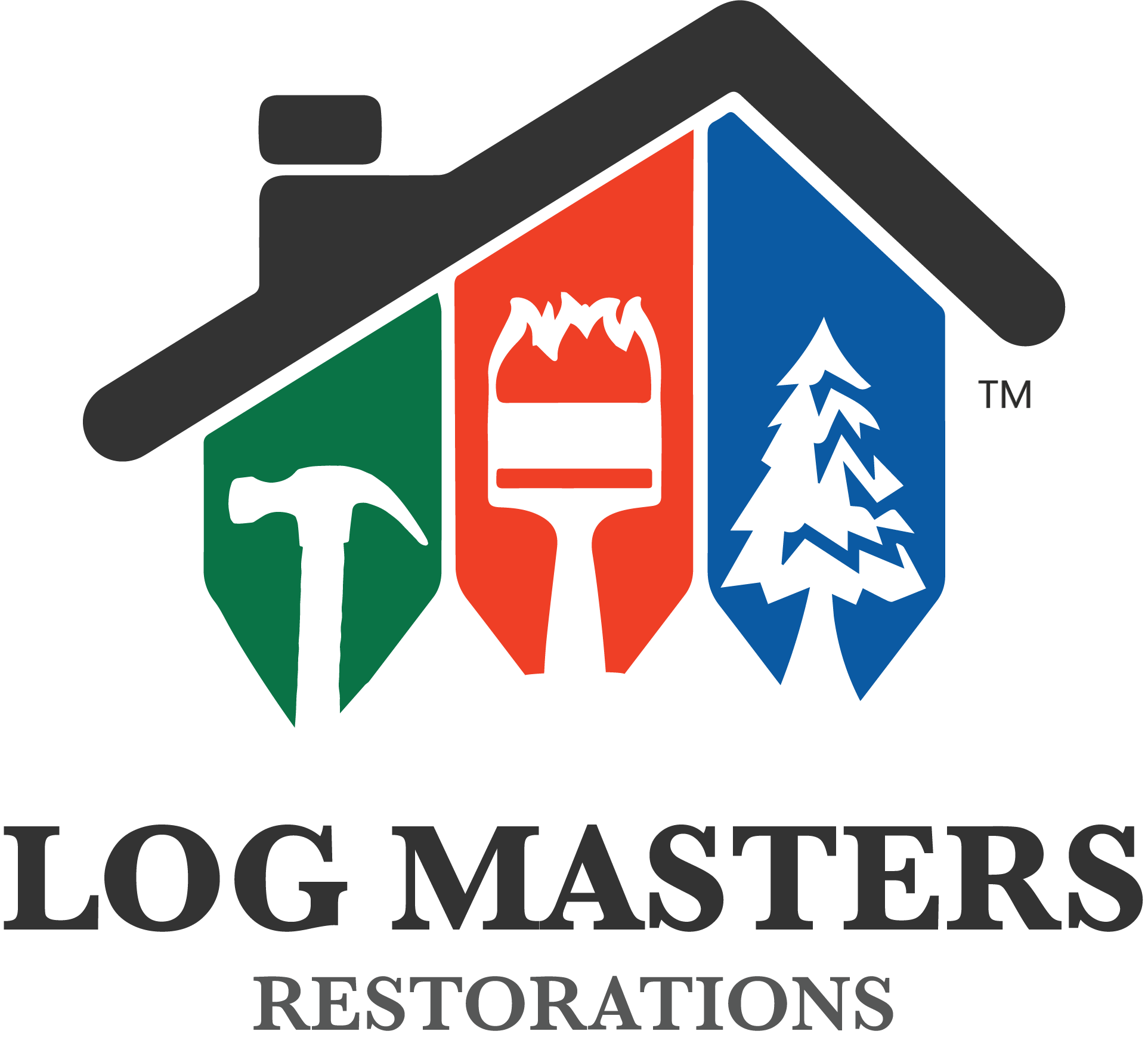When Your Log Home Moves, It’s Not a Ghost – It’s Settling!
Imagine waking up one morning, inhaling the subtle fresh pine log scent, only to find out it indicated your beautiful log home shifted slightly. You may have noticed the doors sticking, uneven floorboards, the windows feeling snug, and tiny gaps between a few logs may be visible. Hearing creeks in the attic? Don’t worry—your home isn’t haunted, and you’re not imagining things. What you’re experiencing is the perfectly natural and expected process of log home settling. Understanding this phenomenon is key to preserving your rustic retreat’s charm and structural integrity. Let’s dive into what settling means, why it happens, and how to embrace it as part of your home’s unique story.
Understanding Log Home Settling
What Is Log Home Settling?
Log home settling refers to logs’ gradual compression and movement as they dry and shrink. This process is caused by factors such as the logs’ drying and shrinking and adjustments to weight distribution changes and environmental conditions.
While all log homes settle over time, the rate and extent depend on factors like wood type, moisture content, and construction methods. Understanding your region’s equilibrium moisture content (EMC) is crucial for managing log home settling.
Why Settling Matters
Settling can cause gaps between logs, leading to air and water infiltration. Because of this, you may need periodic log home maintenance to ensure caulking, chinking, and other sealing materials remain effective.
If not addressed, these structural adjustments can lead to log rot or other damages that put the integrity of your logs in jeopardy. Furthermore, log home settling can distort frames, causing doors and windows to stick or fail, leading to irreparable damage to your home.
Why Does Log Home Settling Happen?
Several factors contribute to log home settling. Understanding these common causes of log home settling can help you avoid excess settling and damage to your home.
1. Moisture Content & Wood Drying
Logs contain natural moisture when first cut, and as they dry, they shrink. Kiln-dried logs experience less shrinkage than green (freshly cut) logs, but all wood undergoes some degree of drying-related settling.
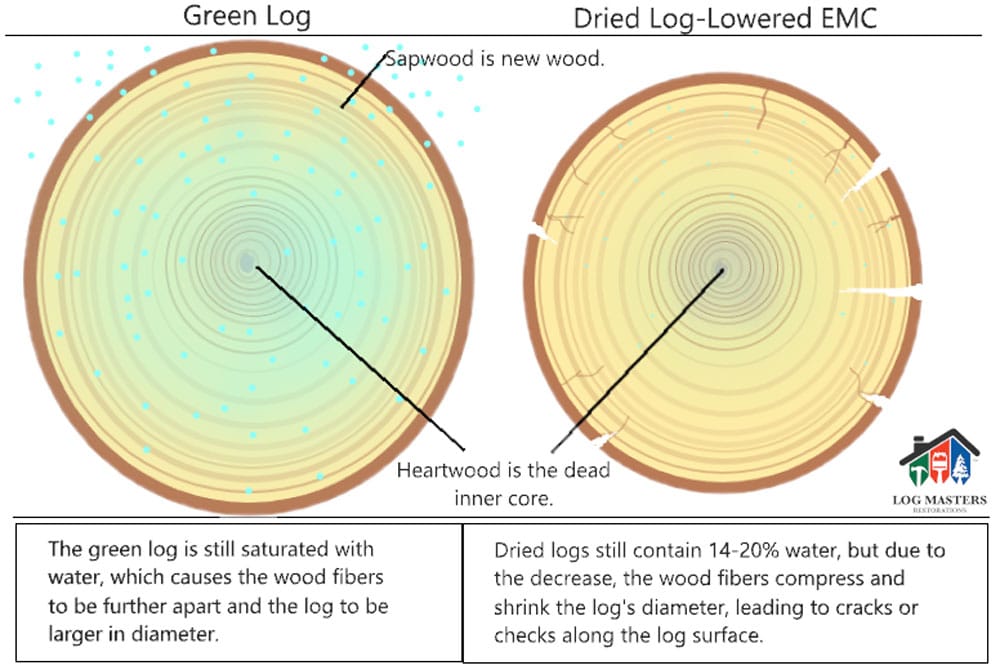
2. Temperature & Humidity Changes
Wood expands and contracts with changing humidity and temperature. In areas with high humidity or extreme seasonal shifts, log homes may experience more significant settling.
3. Log Shape & Size
- Hand-hewn or round logs may settle more than milled logs due to their natural variations.
- Larger logs retain moisture longer, leading to prolonged shrinkage.
4. Construction Techniques
The way a log home is built determines how well it accommodates settling:
- Pre-cut notches allow for controlled settling.
- Slip joints in framing help prevent stress on doors and windows.
- Proper chinking and caulking provide flexibility for natural movement.
12 Visible Signs of Log Home Settling
- Gaps Between Logs: Visible separations between logs, especially near corners, joints, or along the log courses.
- Sticking Doors and Windows: Difficulty opening or closing doors and windows due to frame distortion or misalignment.
- Cracking Caulking or Chinking: Cracks, separations, or pulling away of caulking or chinking between logs.
- Compression of Settling Gaps: Gaps above windows, doors, or structural posts appear smaller or wholly closed.
- Buckling Trim or Skirting: Interior or exterior trim around doors, windows, and baseboards shows signs of warping or buckling.
- Uneven Floors or Misaligned Beams: Floors may feel uneven, or beams appear out of alignment due to structural compression.
- Popping or Creaking Sounds: Unusual noises as logs adjust and settle under compression or environmental changes.
- Shifting Log Alignment: Logs may no longer appear evenly aligned, with some shifting slightly outward or inward.
- Water or Air Leaks: Drafts or water infiltration occur due to gaps created by settling, especially during weather changes.
- Visible Cracks in Logs: Logs may develop checks or splits as they shrink and compress during settling.
- Sagging Rooflines or Eaves: Slight sagging or unevenness in rooflines, often indicating uneven settling.
- Issues with Mechanical Systems: Plumbing, electrical, or HVAC components may show strain or misalignment due to shifting walls or floors.
Natural vs. Problematic Log Home Settling
While all log homes settle over time, not all settling is normal. The table below breaks down the key differences between natural settling and problematic settling so you can determine when to take action.
| Signs | Natural Settling (No Major Concern) | Problematic Settling (Needs Attention) |
|---|---|---|
| Log Shrinkage | Minor shrinkage as logs dry over time. | Excessive shrinkage causing major structural shifts. |
| Cracks in Logs | Small, surface-level cracks ("checking") that don’t affect structural integrity. | Deep, expanding cracks that compromise log strength. |
| Doors & Windows | Slight misalignment that can be adjusted easily. | Doors and windows that no longer close properly or have large gaps. |
| Chinking & Caulking | Slight compression, but still intact and sealing properly. | Gaps, pulling away, or detaching from logs, allowing air and moisture to enter. |
| Chinking & Caulking | No significant changes or movement. | Uneven floors, sloping walls, or noticeable leaning. |
| Log Alignment | Logs remain securely in place with minor shifts. | Logs pulling away from corners, rooflines, or structural components. |
| Timeline | Gradual changes over years, expected in log homes. | Sudden or rapid shifts in structure, indicating a serious issue. |
Although natural settling needs regular maintenance to preserve your log home, unnatural (or problematic) log home settling can lead to disaster if not spotted soon enough. Therefore, it’s important to keep an eye on your log home’s foundation and watch for some of the most problematic signs of log home settling.
Foundational Issues: a Top Contributor to Unnatural Settling
Foundation issues are among the leading contributors to unnatural settling. Below are the five most common types of foundation cracks and their potential causes:
- Step Cracks: Found in block or brick foundations, these cracks follow mortar joints in a stair-step pattern.
- Cause: Differential settlement or lateral pressure from soil or water.
- Horizontal Cracks: Appear along the length of a wall, typically in the middle.
- Cause: Excessive lateral pressure from soil, water, or frost. These are serious and may compromise structural integrity.
- Vertical Cracks: Run straight up and down the wall.
- Cause: Normal foundation settling or shrinkage of concrete as it cures.
- Shear Cracks: Diagonal cracks occur when one part of the wall moves vertically relative to another.
- Cause: Uneven settlement, often a sign of structural problems.
- Floor Cracks: Found in concrete slab floors, often spreading like branches.
- Cause: Soil shrinkage, settlement, or groundwater pressure.
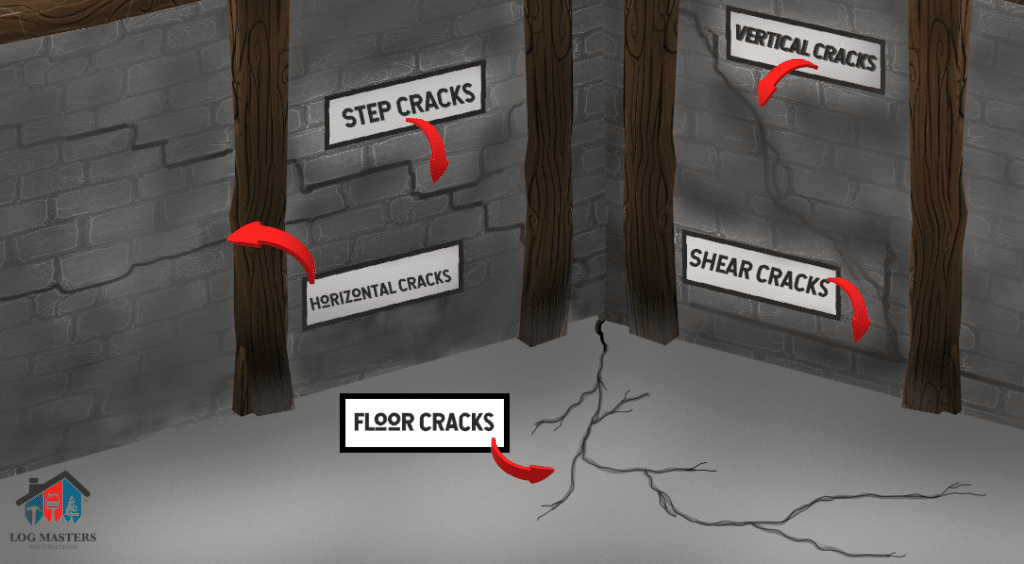
When to Be Concerned About Settling
If you notice any of the following signs of log home settling, they are an immediate cause for concern.
1. Doors & Windows Sticking or Misaligned
If your doors won’t close properly or windows are difficult to open, settling could be causing misalignment.
2. Gaps in Chinking or Caulking
Separation between logs or chinking can let in moisture, air, and pests, leading to further damage.
3. Cracks or Splits in Logs
Small cracks are common, but large splits or logs pulling apart signal excessive settling.
4. Uneven Floors or Gaps in Walls
These could indicate that one part of the home is settling faster than the rest, requiring professional intervention.
How to Manage and Prevent Log Home Settling
While settling will occur in some fashion, it is a good idea to consider ways to mitigate settling issues. Proactive management can help prevent excessive movement and avoid settling hazards.
1. Install Slip Joints or Screw Jacks
Well-built log homes include Slip Joints and Screw Jacks. Log home builders, like Cowboy Log Homes, install slip joints or screw jacks to keep the log home’s frames straight as the house settles to avoid future settling problems. Slip joints allow sliding as the logs settle without compromising the structural integrity. This system will help you prevent wall and ceiling cracks, busted pipes, or torn electric lines when used as intended.
Please consult the original builder or a foundation professional if you have issues. Promptly addressing issues is crucial for safety and longevity, but it can be costly. Log home repairs should not be done until settling problems are addressed.
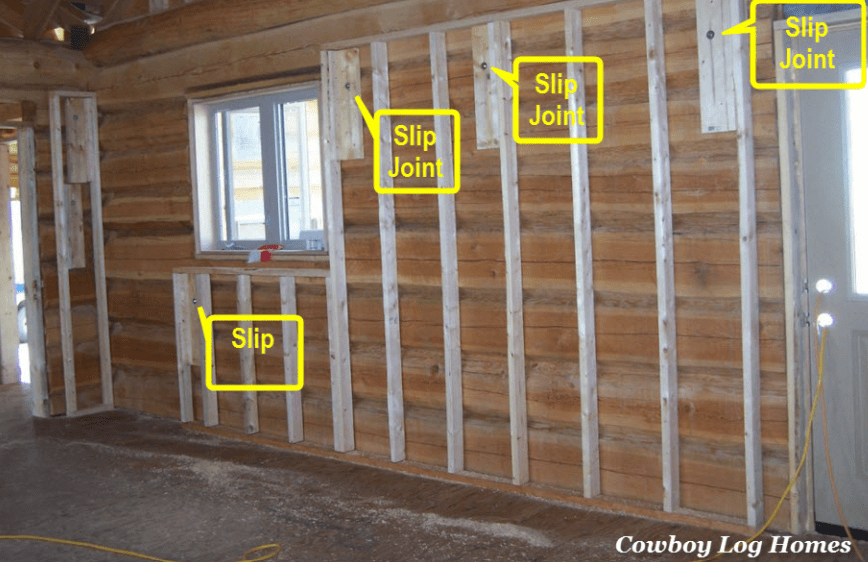
Screw jacks are installed to support the main floor to support decks, columns, and roofs. The second and third floors can benefit from these supports to cause minimal settling to the main floor or interior walls. A conscience log home manufacturer or log cabin builder will often incorporate screw jacks to compensate for future settling. You will usually find screw jacks hidden behind the upper and lower trim.
In the first two heating seasons, the screw jacks should be adjusted by a professional. The time frame for adjusting screw jacks can vary by the type of heat used in your home and the outside climate.
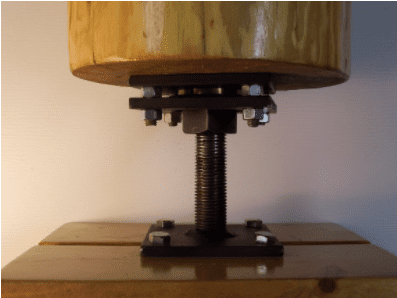
2. Perform Regular Settling Inspections
Homeowners should inspect their log homes at least once a year to catch small settling issues before they become costly repairs. These inspections should be part of your routine log home maintenance. As you inspect your home, keep a settling logbook (with photos and notes) that helps track changes over time.
3. Maintain Proper Chinking & Caulking
Since chinking and caulking help seal gaps between logs, keeping them in good condition is essential for managing settling. Use a high-quality, flexible chinking material that can expand and contract with log movement. Inspect for cracks, peeling, or detachment at least once a year. Reapply chinking as needed to maintain a secure seal and prevent moisture intrusion.
Re-chinking and caulking can be labor-intensive—hiring professionals like Log Masters Restorations ensures the job is done right.
4. Control Moisture Levels Around the Home
Moisture is a major factor in excessive settling, as logs shrink when they dry out too quickly or expand when exposed to prolonged moisture. Keeping your logs at an optimal moisture level reduces shrinkage and cracking. To avoid moisture building up, we highly recommend applying a high-quality stain or sealant to prevent logs from absorbing too much moisture. Also, the landscaping around your log home should be designed with moisture control in mind.
Prevent Log Home Settling From Getting Out of Control With a Log Home Maintenance Plan
The best way to prevent settling-related damage is through ongoing maintenance with professionals who specialize in log home care.
- Annual Settling Inspections – Identify early signs of movement before they cause damage.
- Proactive Chinking & Sealing Maintenance – Ensure protective barriers remain intact.
- Structural Adjustments & Foundation Checks – Keep your home level and stable.
Call Log Masters Today to schedule an expert inspection and protect your log home from excessive settling!
